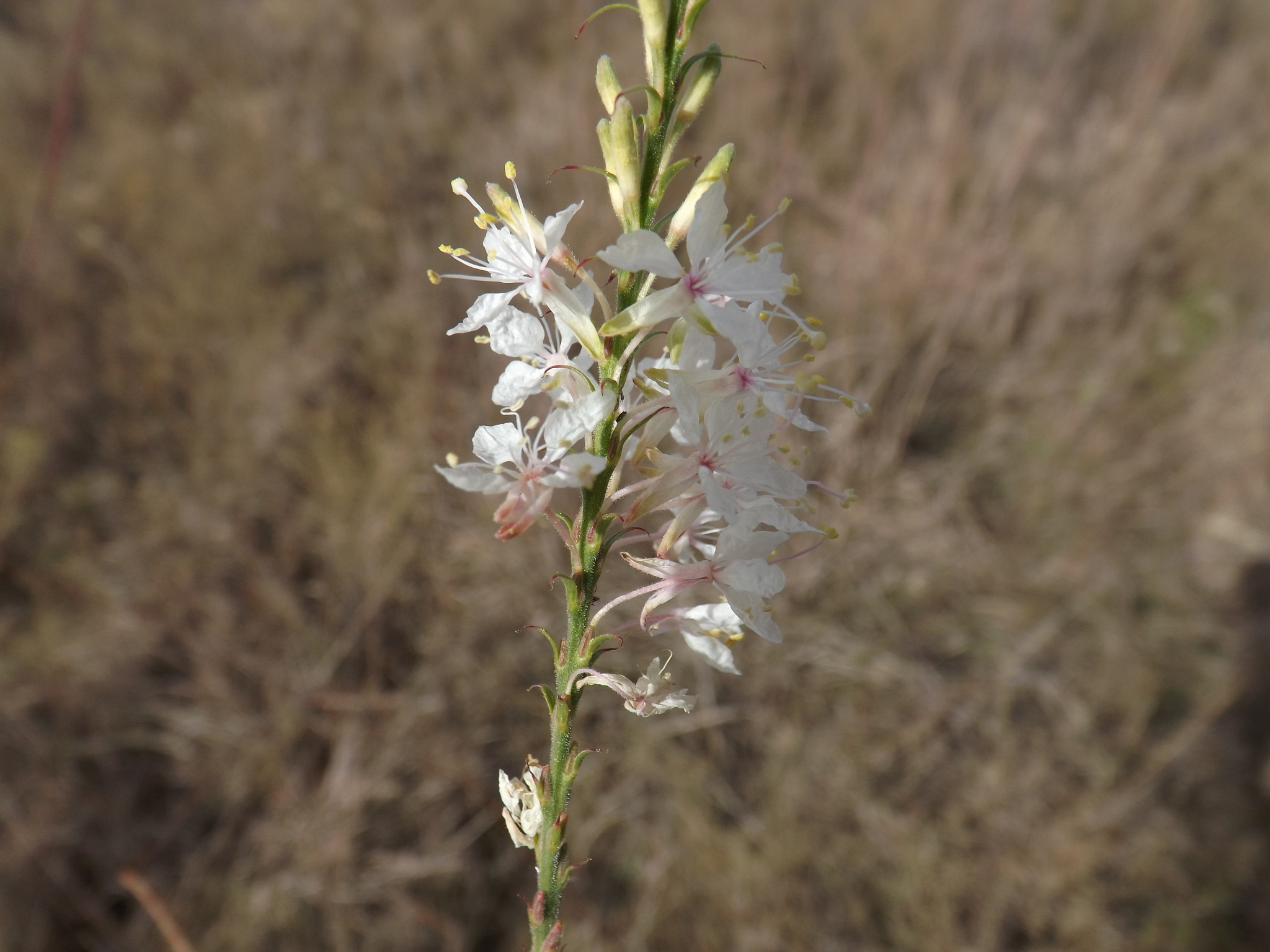False gaura
(Oenothera glaucifolia)

Description
Oenothera glaucifolia, commonly known as the Blue Evening Primrose or the Pale Evening Primrose, is a species of flowering plant in the Onagraceae family. Native to the southwestern United States and Mexico, it is a popular ornamental plant, prized for its delicate blue flowers and ease of cultivation. In this article, we will provide a detailed description of the Oenothera glaucifolia plant, including its physical characteristics, habitat, distribution, uses, and cultivation requirements. Physical Characteristics: Oenothera glaucifolia is a perennial herbaceous plant that typically grows to a height of 1-2 feet (30-60 cm) and a width of 2-3 feet (60-90 cm). The plant has an upright growth habit and produces numerous branches from a central stem. The leaves are alternate, lanceolate in shape, and bluish-green in color. They are covered in fine hairs that give them a silvery appearance. The plant produces showy flowers that are blue or lavender in color, with four petals arranged in a cross shape. The flowers are approximately 1-2 inches (2.5-5 cm) in diameter and have a sweet, honey-like fragrance. The flowers typically bloom in the late afternoon or early evening, hence the common name "evening primrose." Habitat and Distribution: Oenothera glaucifolia is native to the southwestern United States and northern Mexico. It is commonly found growing in open, sunny areas such as prairies, meadows, and along roadsides. The plant prefers well-draining soils and is tolerant of drought and high temperatures. Uses: Oenothera glaucifolia is primarily grown as an ornamental plant in gardens and landscapes. Its delicate blue flowers and silvery foliage make it a popular choice for borders, rock gardens, and mass plantings. The plant is also used in xeriscaping, as it is drought-tolerant and requires minimal water once established. In addition to its ornamental value, Oenothera glaucifolia has also been used for medicinal purposes by various indigenous cultures. The plant has anti-inflammatory and analgesic properties and has been used to treat a variety of ailments, including headaches, wounds, and stomach issues. Cultivation Requirements: Oenothera glaucifolia is an easy plant to grow and requires minimal maintenance. The plant prefers full sun and well-draining soil. It is tolerant of a wide range of soil types, including sandy and clay soils. Propagation can be done by seed or by division of established clumps. Seeds should be planted in the spring, either directly in the garden or started indoors and transplanted later. The plants will self-seed if allowed to go to seed. Once established, Oenothera glaucifolia requires minimal water and fertilizer. The plant is drought-tolerant and can survive on natural rainfall alone. However, regular watering during periods of drought will help keep the plant healthy and blooming. Pests and Diseases: Oenothera glaucifolia is generally pest and disease-free. However, the plant may be susceptible to root rot if grown in poorly-draining soil or if overwatered. To prevent root rot, ensure the soil is well-draining and avoid overwatering. Conclusion: Oenothera glaucifolia is a beautiful and easy-to-grow plant that is perfect for gardens and landscapes. Its delicate blue flowers and silvery foliage make it a popular choice for borders, rock gardens, and mass plantings. The plant is also used for medicinal purposes and is drought-tolerant, making it an ideal choice for xeriscaping.
Taxonomic tree:







